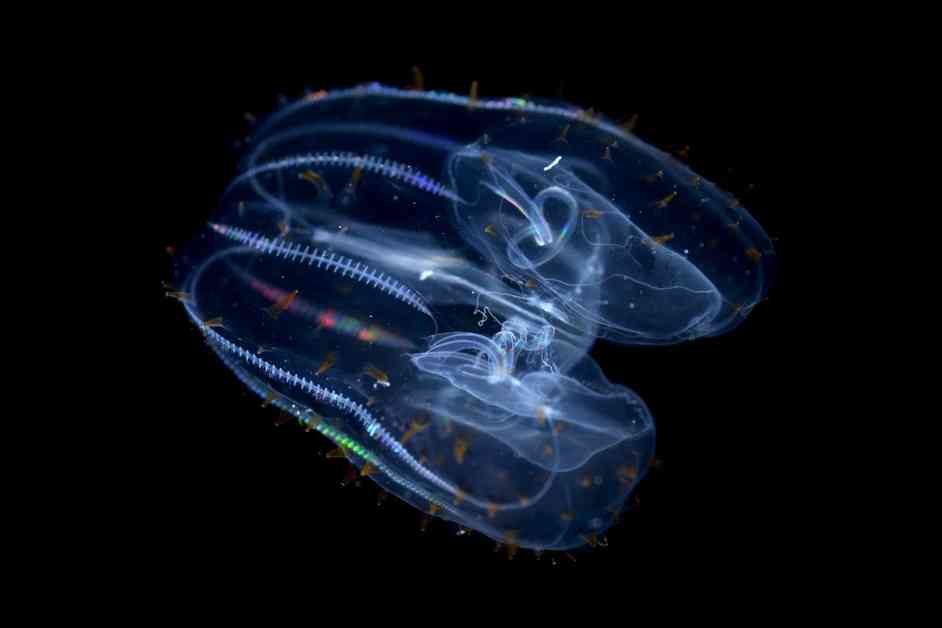Ctenophores, also known as comb jellies, are fascinating deep-sea creatures that have puzzled scientists for years. These gelatinous beings have the ability to survive extreme pressure in the ocean’s depths, but disintegrate when brought to the surface. Recent research published in Science sheds light on how ctenophores manage to thrive in the deep sea environment.
The study, led by Jacob Winnikoff, a deep-sea biochemist at Harvard University, reveals that deep-sea ctenophores have a unique phospholipid called PPE (plasmenyl phosphatidylethanolamine) in their cell membranes. This cone-shaped phospholipid helps maintain the stability and flexibility of the cell membrane under high pressure conditions. Without enough PPE, the cell membrane loses its structure, leading to paralysis of the cell.
By comparing comb jellies from different depths, researchers found that the deeper the ctenophore lives, the higher the level of PPE in its body tissues. This adaptation allows deep-sea ctenophores to withstand the intense pressure of the ocean depths. However, when these creatures are brought to the surface where pressure is reduced, the lack of pressure causes the PPE molecules to expand, resulting in the disintegration of the cell membrane.
Using genetic engineering, the researchers increased PPE levels in Escherichia coli bacteria and found that the higher-PPE strain performed well under both surface pressure and simulated deep-sea pressure. This discovery not only provides insights into the survival mechanisms of deep-sea creatures but also has implications for human health.
PPE is also present in the human nervous system, and its loss is linked to neurological conditions such as Alzheimer’s disease. Understanding the structure and function of PPE could open up new possibilities for developing treatments for neurological disorders. The findings of this study have far-reaching implications beyond the deep sea environment.
Scientists like Cornelia Jaspers and Sanna Majaneva are excited about the implications of this research for their work with ctenophores. This study not only answers long-standing questions about these mysterious creatures but also paves the way for future research on neurological conditions in humans.
Overall, the study on how delicate comb jellies survive deep-sea pressures but disintegrate on land provides valuable insights into the adaptations of deep-sea creatures and their potential implications for human health. The unique properties of PPE in maintaining cell membrane integrity under pressure highlight the wonders of nature and the potential for scientific discoveries to benefit various fields of research.






